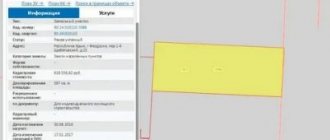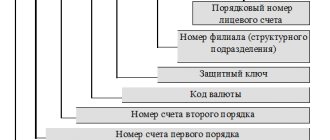Home » Real estate operations » Inventory » Registration of a technical passport of a real estate property
A technical passport for a real estate property is usually drawn up when the house is built, and the customer for its registration is a construction company. In the future, apartment plans will be ordered by the residents themselves. The preparation of a technical passport for real estate is necessary for putting a house into operation, resolving inheritance issues, making purchase and sale transactions, donating, obtaining mortgage loans, and allocating shares.
The procedure for drawing up a technical passport of real estate objects
Having received a package of documents for the object from the applicant, having checked its completeness and correctness, BTI employees draw up and agree on a technical specification with the customer, and also enter into an inspection agreement. After this, surveyors and cadastral engineers go to the site to take measurements of the premises. Based on the data obtained, a primary outline of the dimensions of the premises and their boundaries is drawn up. The results are translated into electronic format.
The procedure for drawing up a technical passport of real estate objects and its format are determined by regulations.
The technical passport includes:
- the year the building was built;
- number of storeys of the building;
- designation of the house series or project code;
- materials of walls and ceilings;
- the total area of the house, the degree of its wear and technical equipment,
- address plan of the property;
- floor plan;
- explication of premises;
- certificate of the estimated value of the object.
The technical passport is signed by the customer and representatives of the BTI, drawn up in two copies, one is kept by the owner, the other by the BTI.
What is a construction project passport?
A construction site passport is an important attribute required for registration of a construction site. It displays important information about the future project: name, type, customer data, and so on. An object passport is required. Nowadays, thanks to technology, the object passport has become of a higher quality. All photographs and images are resistant to mechanical damage and bad weather.
- Possibility of urgent production (on the day of application)
- Delivery within Minsk is free
. Delivery is possible anywhere in the Republic of Belarus. - Own production. There are no intermediaries, our own production allows us to install low prices
with high quality manufacturing.
- Warranty on the object passport for 1 year.
100% refund in case of claims against our work from government agencies. *this condition is clearly stated in the contract - Any form of payment:
cash/non-cash payment, with/without VAT, installments, deferred payments.
How to obtain a technical passport of a real estate property
If you need a technical passport of a property, how to get it? Contact the BTI department at the location of the facility and submit the following documents:
- application for a registration certificate indicating the reason;
- applicant's passport;
- power of attorney for a representative, if necessary;
- title documents for the property;
- document confirming payment for BTI services.
A BTI employee will check all the documents, issue a receipt for them and set a deadline for the production of the registration certificate, which is about two weeks.
A technical passport of a real estate property, the cost of production of which varies in each region, can be issued for residential and non-residential premises and has a validity period of 5 years.
Until 2021, registration of ownership rights to garden houses and garages will, as before under the “dacha amnesty,” be carried out according to a declaration in which all the characteristics of the object are entered. But, as practice shows, it is still advisable to call measurers from the BTI, otherwise Rosreestr will record inaccuracies, which may cause difficulties in the future.
Registration of a technical passport of a real estate object occurs during the registration of property rights in the local office of Rosreestr.
What is the difference between a technical data sheet and a plan?
The two consonant names passport and plan are completely different documents drawn up on the basis of different regulations.
With changes in legislation in 2013, the technical passport lost its significance as a document for registering rights. Now a cadastral passport is used for this purpose, which is carried out on the basis of a technical plan.
This document consists of graphic and text parts; the graphic indicates the location of the object on the site with the determination of the coordinates of the object. Its text part is practically no different from the technical passport and provides information about the individual characteristics of the object.
The technical passport also has graphic and text parts, but the graphic part contains an explication of the object itself, and the text part contains additional information about materials, evaluation, and other important parameters of the object.
The main difference between these two documents is the presence of coordinates of object points on the site or the location of the apartment in the building, which is not in the technical passport.
Binding to the site is carried out using GPS or GLONASS equipment, by creating a geodetic network.
The procedure for processing both documents is also not much different from each other.
However, the law does not provide for the preparation of a technical plan based on the information in the technical passport for an object created after January 1, 2013.
For new facilities built after January 1, 2013 , in accordance with the Cadastre Law, a technical plan can be drawn up on the basis of a commissioning permit and design documentation.
In this regard, a technical plan without a graphic part is first drawn up, and after receiving permission to commission it, its second half is drawn up.
Now the Housing Code provides for mandatory state registration in relation to the housing stock, which makes it necessary to issue a technical passport, and not a technical plan.
Thus, both documents complement each other, but do not replace themselves ; each has its own purpose, function and form.
Assistance from a specialist in obtaining a technical passport - saving time and effort
Sometimes situations arise when during construction any design standards were violated or it was generally carried out without permission. In such cases, obtaining a technical passport is quite difficult, and here you cannot do without the help of a specialist representing an intermediary company. Even if the object was built legally and according to the rules, support for the procedure for obtaining a technical passport by a specialist will speed up the process and save the customer time and energy costs.
MFC "Region" offers citizens and legal entities of Moscow and the Moscow region assistance services in obtaining a technical passport for any real estate: residential and non-residential buildings, premises.
Special offer For regular clients of the Center, discounts are provided on additional services: obtaining extracts from the state register, certificates, etc.
← Preparation of documents for BTI/RTI ↑ Inventory Registration of permission for demolition of buildings and structures →
I. Rules for the design of the title page and sections of the technical passport
1. Design of the title page
When preparing the title page of the technical passport, the corresponding lines are filled in as follows:
“name of OTI” - the full name of the organization of technical accounting and technical inventory of capital construction projects is indicated;
“address” - indicates the postal code, the name of the subject of the Russian Federation, the name of the administrative district (district), the name and type of settlement (city, village), city district, name and type of street (alley), house number, building (building) or another officially assigned address of the facility;
“The passport is compiled as of” - the date of inspection of the individual housing construction object is indicated.
2. Completing section 1. “General information”
When filling out section 1. “General information”, the corresponding columns are filled in as follows:
actual use - indicated “for its intended purpose” or “not for its intended purpose”;
year of construction - the year of commissioning is indicated;
total and living areas of a residential building - the areas are indicated in accordance with the explanation for the floor plan of the residential building;
number of floors of the above-ground/underground part - the numerical value is indicated based on the results of an inspection of the facility in accordance with current construction and technical standards;
note - to be filled out if there is information about a violation of town planning and construction norms and rules, there is no building permit, or there is other information that is essential for the accounting of objects.
Completing section 1.1. “Previously assigned (for reference)” is mandatory if the individual housing construction project was previously assigned inventory and cadastral numbers by the organization of technical accounting and technical inventory of capital construction projects.
The address of the object, previously assigned numbers (inventory, cadastral), and the letter of the object are indicated.
3. Filling out section 2. “Object composition”
When filling out Section 2, “Object Composition”, the corresponding columns are filled in as follows:
Column 1 - indicates the letter designation (letter) or digital designation* (1) assigned to parts of the individual housing construction project or auxiliary buildings, structures (accessories of the individual housing construction project) on the plan;
Column 2 - indicates the name of parts of the individual housing construction project or auxiliary buildings, structures (residential building, residential extension, veranda, barn, etc.);
columns 5, 6, 7, 9, 10 - indicate the measurement data of the main parameter (parameter name, unit of measurement, number of units of measurement):
— for buildings — total area;
- for buildings:
length (for linearly extended structures);
volume (for volumetric structures);
area (for area structures);
height;
Column 8 - indicates the building area in square meters for all parts of the individual housing construction project or auxiliary buildings and structures;
Column 9 - the height is indicated in meters; for paving and underground structures it is not indicated;
column 10 - the volume is indicated in cubic meters; for paving and linearly extended structures it is not indicated.
4. Completing section 3 “Information about the copyright holders of the object”
Information about the copyright holders of an individual housing construction project is filled out taking into account the available information in the OTI and the documents submitted by the owner (or his representative).
When filling out Section 3 “Information about the copyright holders of the object”, the corresponding columns are filled in as follows:
Column 4 - indicates the right of ownership or other real rights, as well as details of title and title documents. These details include the name of the document, its series and number, date of issue and name of the institution that issued the document;
Column 5 - indicates the share of the right in the form of a proper simple fraction (in the case of common ownership), an integer (in the case of one owner) or letter(s) of the part of the building registered with the owner.
5. Completing section 4 “Situation plan”
If there is a cadastral plan of the land plot on which the individual housing construction project is located, the preparation of the situational plan is carried out by the OTI in terms of missing measurements of the external dimensions of capital construction projects. If there is a cadastral plan of the land plot, it is not allowed for the OTI to carry out repeated measurements of the land plot on which the individual housing construction project is located.
The preparation of a situation plan is carried out based on field measurements with the drawing of all existing buildings, structures and boundaries of land types (yard, garden, vegetable garden, green spaces, etc.).
Section 4.1 must be completed after the publication of the relevant regulations establishing the procedure for determining the coordinates of buildings and structures.
6. Completing section 5 “Improvement of an individual housing construction project”
All lines are filled out separately for a residential building, auxiliary buildings, and structures. The columns indicate the area of premises equipped with each type of improvement.
7. Completing section 6 “Floor plan”
Compiled based on measurement data of an individual housing construction project in the prescribed manner * (2).
8. Completing section 7 “Explication for the floor plan of a residential building”
In the explication for the floor plan of a residential building, a description of the premises, rooms and calculation of areas are made.
All rooms and premises for auxiliary use of a residential building are included in the explication lines.
Rooms and premises for auxiliary use are indicated in the following sequence: ordering by letter (in alphabetical order), ascending floor, room number, room number.
When filling out section 7 “Explication for the floor plan of a residential building”, the corresponding columns are filled in as follows:
Column 1 - indicates the letter of the individual housing construction object in which the room or premises for auxiliary use is located;
Column 2 - indicates the number of the floor on which the room or premises for auxiliary use is located. If there is no floor numbering (mezzanine, basement, ground floor), the name of the floor is indicated in the column;
Column 3 - indicates the number of the room according to the floor plan in which the room or premises for auxiliary use is located;
Column 4 - indicates the number of the room or premises for auxiliary use according to the floor plan;
Column 5 - indicates the purpose of the room or premises for auxiliary use;
Column 6 - indicates the area of the room or premises for auxiliary use, regardless of their type;
Column 7 - indicates the area of the room or premises for auxiliary use, if they are included in the total area;
Column 8 - indicates the area of the living room;
Column 9 - indicates the area of the room or premises for auxiliary use, if they are included in the auxiliary area of the premises;
Column 10 - indicates the area of auxiliary premises not included in the total area of the residential premises (balconies, loggias, terraces, verandas);
Column 12 - indicates the height of the room or premises for auxiliary use according to internal measurements;
column 13 - a note indicating the presence of an unauthorized rebuilt or redesigned area is indicated;
Column 14 - additional necessary information about the room or premises for auxiliary use is indicated.
As a result, the following is calculated for the floor: the area of all premises of the floor (sum in column 6), the total area of the floor (sum in column 7), living area of the floor (sum in column 8).
As a result, the area of all premises of the building (amount in column 6), the total area of the building (amount in column 7), and the living area of the building (amount in column 8) are calculated for the building (per part of the building - letter).
9. Completing section 8 “Inspection notes”
The date of inventory, full name and signature of the work contractor are indicated; Full name and signature of the person exercising control.
Object passport
The object passport is
an information stand that provides information about the construction project, allowing you to present the work of the construction company and fulfill the requirements of the TCP: place a 1x2 m object passport at the entrance to or exit from the construction site or in an accessible place for viewing. In accordance with the requirements of TCP 45 -1.03-161-2021 it is a mandatory element of construction site design.
According to clause 3.15, the following details must be indicated in the object passport:
- address and name of the facility (according to project documentation);
- name of the customer's organization, contact phone number;
- name of the design organization, contact phone number;
- name of the contractor, contact telephone number;
- telephone number of the person responsible for the work;
- last name, first name, patronymic of the director of supervision, contact phone number;
- last name, first name, patronymic of the responsible person for technical supervision (engineering organization), contact numbers;
- start and end dates of construction of the facility;
- permission from the Gosstroynadzor body (for housing objects - Gosstroynadhor inspector, contact phone number);
What Dimensions Should the Object Passport Have?
1. Polyvinyl chloride (PVC) + self-adhesive film with all the necessary information + laminate. The service life of the product is not limited, the material is resistant to fading in the sun and exposure to the elements.
SITE PASSPORT is a special stand that is placed on construction sites of buildings or structures. The stand contains information about the name of the object, its customer, contractor, etc. Below you can see the full list of items that must be indicated on the CONSTRUCTION PROJECT PASSPORT according to current legislation.
This is interesting: If Rosgosstrakh pays according to proportion, what does that mean?
Construction information stands (facility passport)
To do this, the object passport indicates: the name of the object under construction, the address of the construction site, the customer and the contractor responsible for the construction and their telephone numbers for communication. The construction stand also indicates the number of trees and shrubs cut down and planted. And most importantly, the construction time.
It is beneficial to take an object passport made of banner fabric stretched over a metal frame. The metal frame can be welded or screwed to the posts on an uneven surface, and the stretched banner with information will remain evenly stretched.





